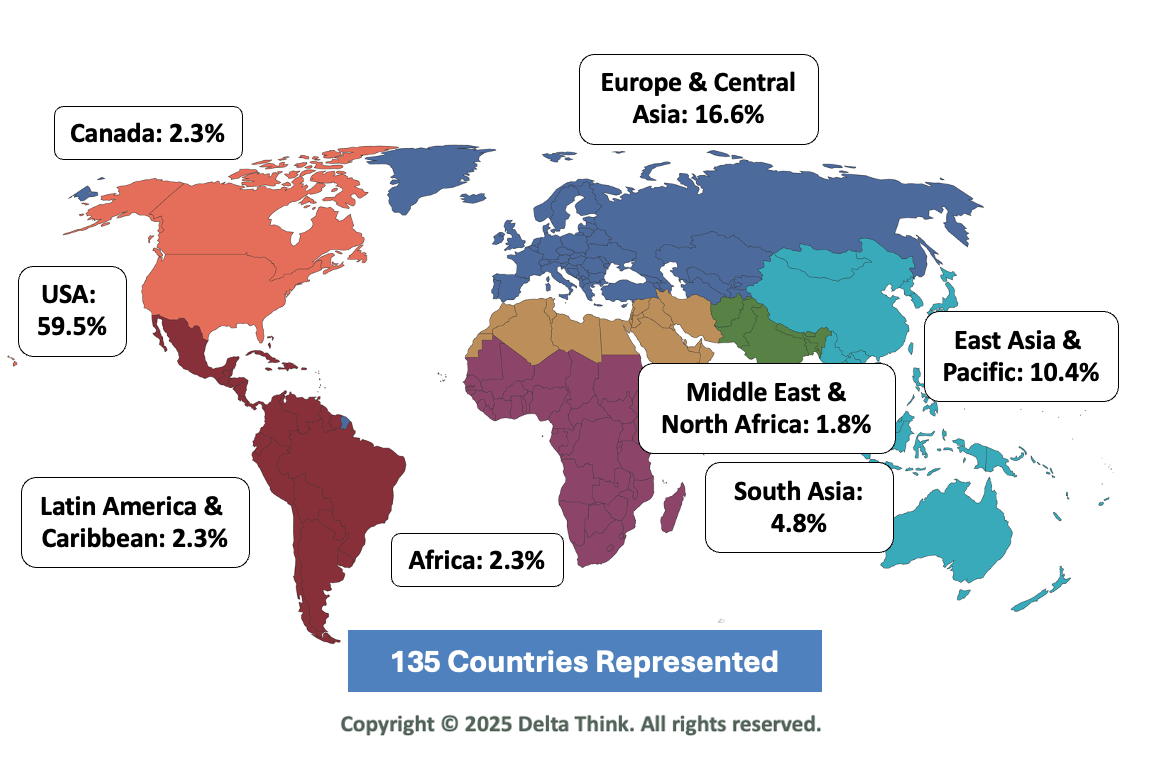Delta Think Launches Education Practice and Names Lori Carlin Chief Commercial Officer

Philadelphia, PA (May 13, 2020) – Delta Think, a consulting and advisory firm focused on innovation and growth in scholarly communications, today announced two organizational changes to help serve the needs of the community in the current environment.
Delta Think is pleased to launch a new Education Practice, headed by Partner Bonnie Gruber. The new Practice will be focused on helping organizations reimagine educational and learning offerings and programs for a virtual environment. Collaborating with Delta Think to support the new practice is Diane Harnish. Diane comes to Delta Think with more than 30 years of experience in the scholarly publishing and higher education markets, where she has worked extensively to develop and execute growth-oriented market, product, and commercial strategies. Diane has held numerous executive-level positions with leading publishing and educational organizations, including Wolters Kluwer and Informa.
“This is clearly a time of change in education and learning,” said Ms. Gruber. “Necessity is the mother of invention, and we know our clients seek opportunities to reimagine programs, content, and services for a changing environment. With Diane’s help, we hope to provide the expertise our clients need to build and implement strategies to address immediate concerns while also positioning them to serve their educational mission well into the future.”
At the same time, Lori Carlin is promoted to Delta Think Chief Commercial Officer (CCO). Lori has served as Senior Consultant and Director of Marketing for the organization since 2013. As CCO, Lori will be responsible for business development for Delta Think’s consulting practice, supporting client needs in this rapidly changing environment. Together with the extended Delta Think team, Lori will provide support and expertise for associations and scholarly publishers grappling with the unique challenges of today. She will also continue her work with clients on projects focused on Customer Insight, Marketing Strategy, Market Research, and Business Strategy.
“I’m excited for the opportunity to expand my role in serving this community during this challenging time,” stated Ms. Carlin. “From my many years working for individual associations and scholarly publishers, to my work at Delta Think assisting a wide variety of clients, my main objective has always been to support their efforts to evolve. This new role allows me to do even more to help our clients adapt and advance.”
ABOUT DELTA THINK, INC.
Delta Think is a consulting and advisory firm focused on helping publishers, societies, and information providers anticipate, create, and manage change. Since 2005, Delta Think has served more than 100 organizations across the scholarly enterprise to analyze market intelligence, develop customer insights, and create effective business strategies as related to products, services, and full portfolios.
Delta Think engagements are as varied as our clientele, but are always grounded in carefully curated market data and trend analysis. To support data-driven decisions surrounding Open Access, in 2017 Delta Think launched the Open Access Data and Analytics Tool (OA DAT), a subscription-based product which allows users to stay abreast of the continually evolving market through carefully curated data, visualizations, and expert commentary on APCs, funding, market sizing and dynamics, and more.
Learn more at www.deltathink.com and https://oainfo.deltathink.com/
For more information, please contact:
Lori Carlin
Delta Think, Inc.
lori.carlin@deltathink.com
phone: +1.215.402.7225







News & Views: Will cuts to National Science Foundation funding affect scholarly publishing activity?






